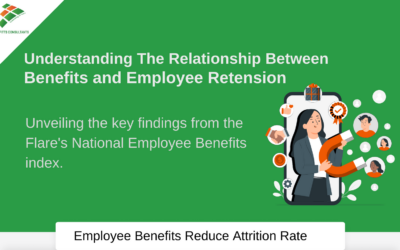Contents
Interviews can be nerve-wracking experiences at the best of time. Of course, making the right impression on a hiring manager can be even tougher when they use an interviewing strategy you’re not familiar with or prepared for.
Behavioural -based interviews (often referred to a competency-based interview) are growing increasingly popular, as companies search for ways to remove bias from the recruitment experience. Rather than making choices based entirely on a candidate’s CV, or a “gut instinct,” competency-based interviewing allows organisations to select the right person for the role, based on examples of how they performed in previous positions.
With a competency-based or “behavioural” interviewing strategy, you can add weight to your application, and show an employer why you’re the perfect addition to their team.
The question is, how do you ensure you’re prepared for success?
1. List the Competencies The Company Is Looking For

There are dozens of “popular” competencies that hiring managers search for in a new employee. Since you can’t prepare a story for every possible scenario your employer may want to explore, it’s essential to narrow down your responses by researching the business and listing the competencies most important to them.
Start with the job description, scanning through the document for any keywords or phrases that indicate crucial competencies. For instance, the phrase “ability to work well in a group” translates to the need for strong teamwork. You may end up with a list like this:
- Customer service
- Teamwork
- Problem-solving
- Attention-to-detail
- Organisation
You can also speak to your recruitment agency and check the firm’s website for additional insights into the competencies present in their company culture.
2. Prepare Examples for Each Competency

A competency-based interview works by asking you to describe how you would respond to a potential situation, with stories of how you handled similar circumstances in the past. For instance, a business searching for a C-Suite candidate might ask questions that help the person to highlight their leadership potential, such as: “Tell us about a time when you managed and motivated your team to achieve a strict deadline.”
Take your list of competencies from above and create an answer that demonstrates your capacity for each characteristic. If possible, look for answers that highlight more than one competency. For instance, an example of dealing with a problematic client may underline problem-solving skills, attention-to-detail, and exceptional teamwork.
Even if you’re fresh from graduation, you can still use the competency-based technique by drawing on examples from your personal life, academic experiences, and volunteer work.
3. Listen to Each Question Carefully
While it’s important to practice and memorise each answer, remember to be flexible. Listen very carefully to the interviewer, and make sure that you’re picking up on the competencies they want you to exhibit. Check your understanding with the interviewer if you are unsure what they are asking. If you have misunderstood the question, they will repeat it.
Many candidates fall into the trap of answering the question they’ve prepared for, rather than the one they’re being asked. Where possible, adopt the focus of your previous work example to suit the unique nuances of the question. For instance, if they’re looking for teamwork, rather than leadership skills, concentrate on how you built on your colleagues’ input, rather than how you drove success.
Use a different behavioural example for each question too, as this will give the interviewer a deeper insight into your potential, and your past.
4. Embrace the STAR Model

The STAR model is the most common way to respond to a competency-based interview question. It involves:
- S (Situation): Describing the situation the interviewer asked about
- T (Task): Explaining what you needed to do
- An (Action): Highlighting the actions you took
- R (Result): Showcasing the outcomes of your actions
Remember to be specific and concise in your answers. Don’t attempt to show that you have every competency the interviewer is looking for at once. Additionally, don’t just make up an example, as you won’t sound believable. If you can’t think of a response quickly, ask for a moment to organise your thoughts.
5. Be Positive and Authentic

Finally, make sure that your answers come across as honest and transparent in the interview. The aim is to make yourself look as good as possible in the context of the competencies your hiring manager is looking for. Highlight your skills and remember to keep the focus of your story on you, and what you accomplished.
Remember, if you’re describing a particular problem, such as when you were working with a demanding boss, don’t be negative about that person, or place blame. These questions are about you, not other people’s issues. Consider practising your responses with a friend or family member and ask them to point out any areas where you sound insincere, or negative so that you can change your tone.
Thanks,
Amrutha
About JobFitts
JobFitts Consultants are a specialist provider of professional Recruitment Services for the Financial Services sector and related suppliers in Australia. Since 2003 we have recruited and placed a breadth of operational roles at all levels from; HR, Accounting, Marketing and Customer Service/Frontline.
To find out more visit our website at JobFitts here or call us on (02) 9220 3595 or email here.











Share This
Share this post with your friends!